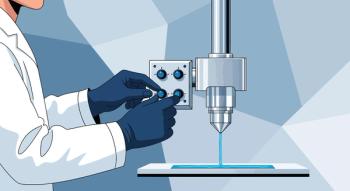
Highlights of ICH Q13 Session (PDA/FDA Joint Regulatory Conference 2023)
Kelley Burridge, PhD, Product Quality Team Leader, OBP, OPQ, CDER, U.S. FDA, discusses the highlights of her ICH Q13 session that she wants others to be aware of.
In part of the session "Continuous Manufacturing and Publication of ICH Q13" at the PDA/FDA Joint Regulatory Conference, Kelley Burridge, PhD, Product Quality Team Leader, OBP, OPQ, CDER, U.S. FDA, discusses the highlights of her ICH Q13 session that she wants others to be aware of.
Burridge: Fundamental concepts of continuous manufacturing and Q13 are new to many in the pharmaceutical industry. Continuous manufacturing generates a lot of data that can be transformed into product and process knowledge. Building widespread knowledge experience in covert with continuous manufacturing for pharmaceuticals in industry and among regulators will take some time. To introduce [fleeing leisure]: A pharmaceutical development and manufacturing requires communication and collaboration among people with training in different fields, chemists, biologists, pharmaceutical scientists, and engineers, especially chemical engineers. If you don't know any chemical engineers, get to know them, as their core undergraduate training is rooted in the continuous manufacturing fundamentals highlighted in Q13. We build cross disciplinary teams and help them to really facilitate that knowledge sharing especially among teams that have similar job functions. Knowledge of chemical engineering fundamentals, plus experience with the aspects that are particular to the pharmaceutical industry will be a powerful force for modernization in pharmaceutical manufacturing. We also need to determine the best ways to present new types of information for industry and regulators to communicate effectively. conferences such as this one are a great way to share best practices.
Editor's Note: The words in the [bracket] are an assumption of what is being said, as we have not gotten confirmation yet from the speaker about what exactly is being said.
Newsletter
Get the essential updates shaping the future of pharma manufacturing and compliance—subscribe today to Pharmaceutical Technology and never miss a breakthrough.





